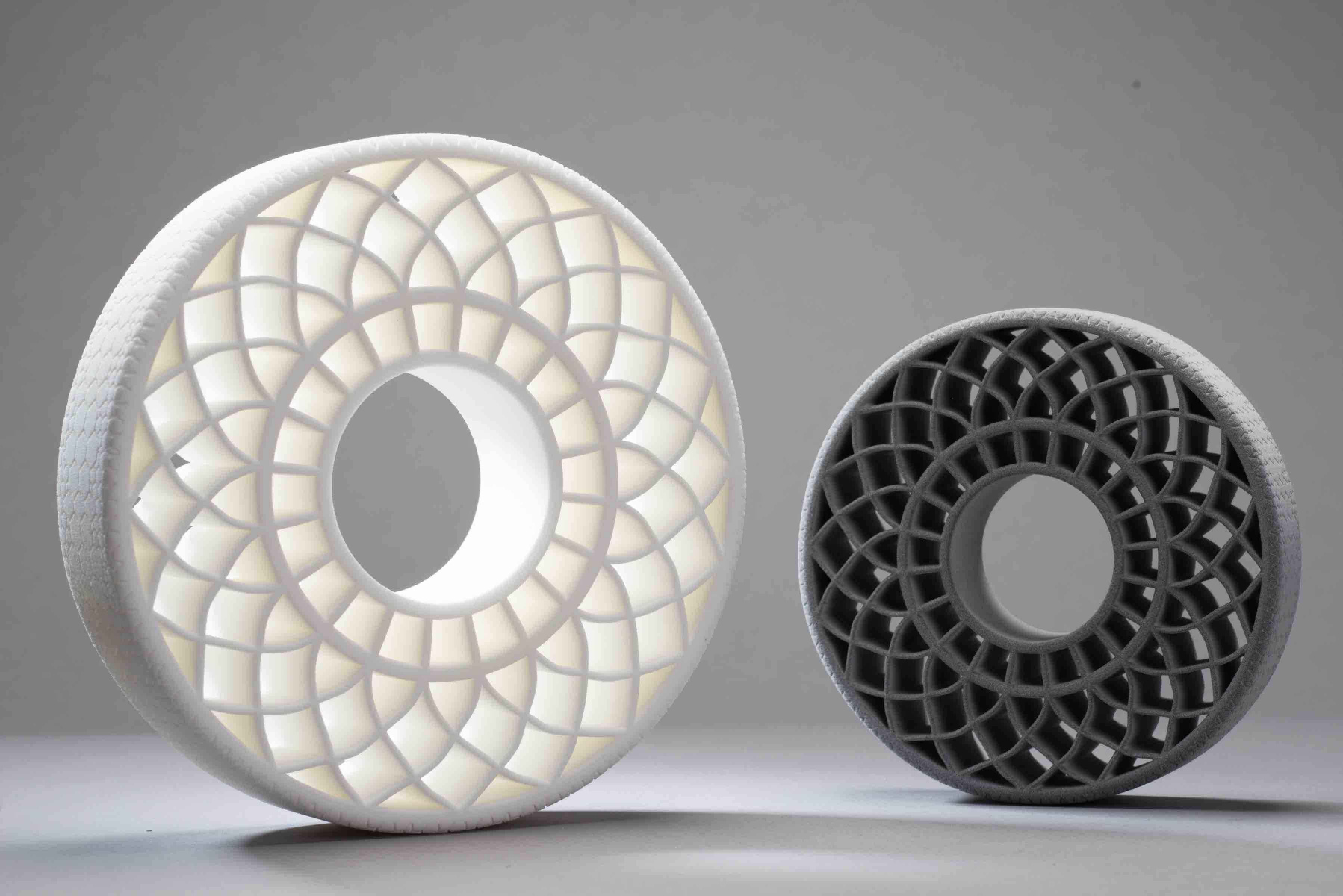
Five Takeaways from Shapeways’ webinar with Forward AM
Our recent webinar with Forward AM, the BASF printing solutions brand, showcased the many exciting ways that 3D printing is reshaping the future of the automotive industry. Here are five takeaways from “Driving Advances in Automotive” that highlight what’s underway and what’s ahead for 3DP and the automotive industry.
The role of 3D printing in this sector is exhibiting Tesla-like acceleration. According to 3dpbm Research, expected revenues for traditional automotive parts produced by additive manufacturing should grow from $2.6 trillion in 2020 to $15 trillion by 2030.
1. The automotive industry continues to be a leader in use of 3DP
As far as the automotive industry in Detroit is concerned, 3D printing isn’t new. “The automotive space has been using 3D printing for a long time, probably as long as any industry,” said Jeremy Vos, business development manager for automotive and aerospace, at BASF Forward AM, North America. “Today, automotive remains one of the major users and therefore is far ahead when it comes to embracing and deploying the technology.”
According to Wohlers Associates’ “The State of 3D printing 2020” survey, automotive represents the top user segment of additive manufacturing. The technology has been showing its transformative powers in different applications. The reason is simple: making vehicles is a very capital-intensive business with millions of dollars spent each year on the design, development and delivery of the latest-and-greatest things on four wheels.
3D printing has proven it can improve the overall speed and agility of manufacturing.
Forward AM’s Vos cited the example of giant automaker Daimler, which utilized 3D printing to accelerate and validate the design process necessary for a new engine bracket to meet a very strict deadline.
According to Vos, about a dozen brackets were needed to complete noise vibration testing. Opting for traditional injection molding would have required months of preparation and wait time. Instead, 3D printing enabled predictable simulation results that led to expedited delivery of functional prototypes that accurately represented how the injection-molded part would function. Shortening development time and iteration steps permitted the company to perform driving tests and meet the target for its new vehicle launch.
2. Functional prototyping and production parts are gaining traction with 3DP
For several decades, automakers have used 3DP to create design prototypes for proof-of-concept and/or testing. Parts then can be refined into functional versions that meet the auto industry’s strict technological readiness levels (TRLs) and form-and-fit tolerances. As 3DP has proven in every other industry segment, the technology is unbeatable when the task calls for rapid design innovations and part iterations.
But prototyping is just the tip of the spear in driving 3DP adoption in automotive. Increasing reliance on 3DP for manufacturing production parts helps automakers improve their materials usage while reducing scrap and wasted parts. The growing impact of 3DP also empowers auto manufacturers to reduce their carbon footprint—an initiative that all businesses need to address—while attending to noise and air pollution excesses. According to Vos, 3D-printed parts made of thermoplastic urethane (TPU) that become surplus can be recycled and reground for use in other applications—a welcome “green” upgrade over decades-old practices.
3. Customization & 3DP: Only limited by your imagination
The market for designers and providers of customized parts and accessories is very competitive and crowded. Nevertheless, automakers increasingly understand that embracing customization will reap the further benefit of customers’ increased satisfaction and loyalty to their brands. If customization is the key, 3DP printing is the engine.
Imagine 3D-printed seating options that specifically cater to drivers’ and passengers’ orthopedic needs. Special-fitting headrests and seats can be produced using 3D-printed foams. 3DP excels in providing intricate, customized latticework structures that best address applications for heating and cooling capabilities as well as lumbar support—all of which improve occupants’ driving experience. “What we can do with the combination of innovative design, lattice structures and 3D printing is quite amazing,” said Vos. “You can customize for hard or soft, depending on different points, while building for durability.”
The aftermarket for 3D-printed gear also is heating up. Shapeways has worked with 67 Designs, a designer of off-road products, to deliver tens of thousands of its highly durable iPad mounting devices to customers all over the world. 67 Designs created the in-vehicle accessory and Shapeways then printed prototypes that led to the debut of the MagMount G3.
4. Gigantic parts warehouses will no longer be necessary; print parts instead
Vehicle manufacturers and their multiple parts manufacturing partners must maintain gigantic, multi-location warehouses to store a seemingly endless supply of parts and accessories. The promise of 3DP lessens this burden with its ability to replace or at least reduce much of that square footage in the name of a digital inventory.
When a part is needed, instead of searching the aisles and racks, a digital file is called up and the request is printed on demand. In this vein, 3D printers also deliver heightened degrees of supply chain optimization while eliminating expensive tooling costs.
Not only does 3DP reduce the physical need for costly and vast warehousing, the process can be set up virtually anywhere, putting parts acquisition much closer to the end-customer, reducing time-to-delivery. 3DP also represents a great opportunity for owners of vintage or rare vehicles, where parts may have limited availability or are permanently out-of-stock.
5. Down the road: fully 3D-printed vehicles
Simply put, 3DP is poised to be the biggest change in car production since Henry Ford debuted his moving assembly line in 1913. While the concept of 3D printing an entire vehicle may sound like science fiction, someday it will be commonplace. There are enormous changes underway in the automotive market as traditional dealerships no longer are seen as the only game in town as an increasing number of consumers are buying vehicles online or from non-traditional outlets.
At the same time, there is relentless competition among auto manufacturers to deliver electronic vehicles that are safer and smarter as well more lightweight and energy efficient. 3DP’s brilliance in creating honeycomb-style parts goes a long way toward making vehicles lighter and therefore more energy efficient to operate.
Swedish manufacturer Koenigsegg has made some 300 sports cars with a vast number of parts that were 3D-printed at its own in-house facility. Eventually 3DP can make it possible for all sorts of companies to enter the field to compete with anyone from Ford and General Motors to Tesla and McLaren. Buckle up, it will be a wild ride.


